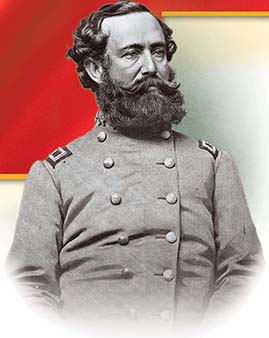SECTION 3: The End of Reconstruction

▲ Wade Hampton
WITNESS HISTORY  AUDIO
AUDIO
A Stormy Election
Wade Hampton was an old southern aristocrat from a long line of cotton planters and had been a Confederate general during the Civil War. In short, he was exactly the sort of man that Radical Republicans did not want to see in power.
In 1876, Hampton ran for governor of South Carolina. Across the state, huge crowds cheered his fiery speeches denouncing the carpetbaggers and scalawags who controlled the state government. Hampton won the election by a wide margin. But Radical Republicans charged fraud and refused to leave office. For four months, while federal troops barred Hampton from the statehouse, South Carolina had two separate governments. Not until the troops were withdrawn did Hampton take full possession of his office. The stormy election proved to be one of the last stands for Radical Republicans in the South.
Objectives
- Explain why Reconstruction ended.
- Evaluate the successes and failures of Reconstruction.
Terms and People
- Redeemer
- Rutherford B. Hayes
- Compromise of 1877
NoteTaking
Reading Skill: Identify Main Ideas Use a chart like the one below to record main ideas about the factors that led to the end of Reconstruction.

Why It Matters In the end, most northerners came to realize what southerners already knew. The rebuilding of the politics, economy, and society of the South would not be easy, nor would it happen quickly. As reformers lost their resolve, old prejudices took new shapes. It would take generations of striving before some issues were resolved. Section Focus Question: How and why did Reconstruction end?
The Nation Considers Other Matters
By 1872, the nation had been focusing its energies on regional strife for almost two decades. Meanwhile, other social, political, and economic issues cried out for attention. European immigration had swelled the population in the North and West. Corruption and intrigue had become part of city politics. As new technologies spurred the growth of industry and provided new opportunities for huge profits, they also provided opportunities for major corruption.
Corruption Plagues Grant’s Administration
Ulysses S. Grant was a popular war hero but a disappointing President. Allied with the Radical Republicans, he promised to take a strong stand against southern resistance to Reconstruction. But Grant’s ability to lead was marred by scandal. He gave high-level advisory posts to untrustworthy friends and acquaintances who used their positions




